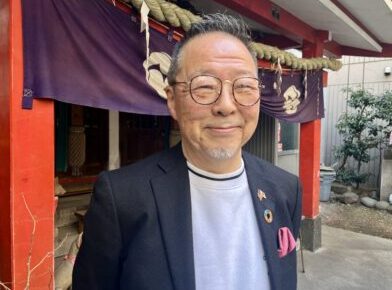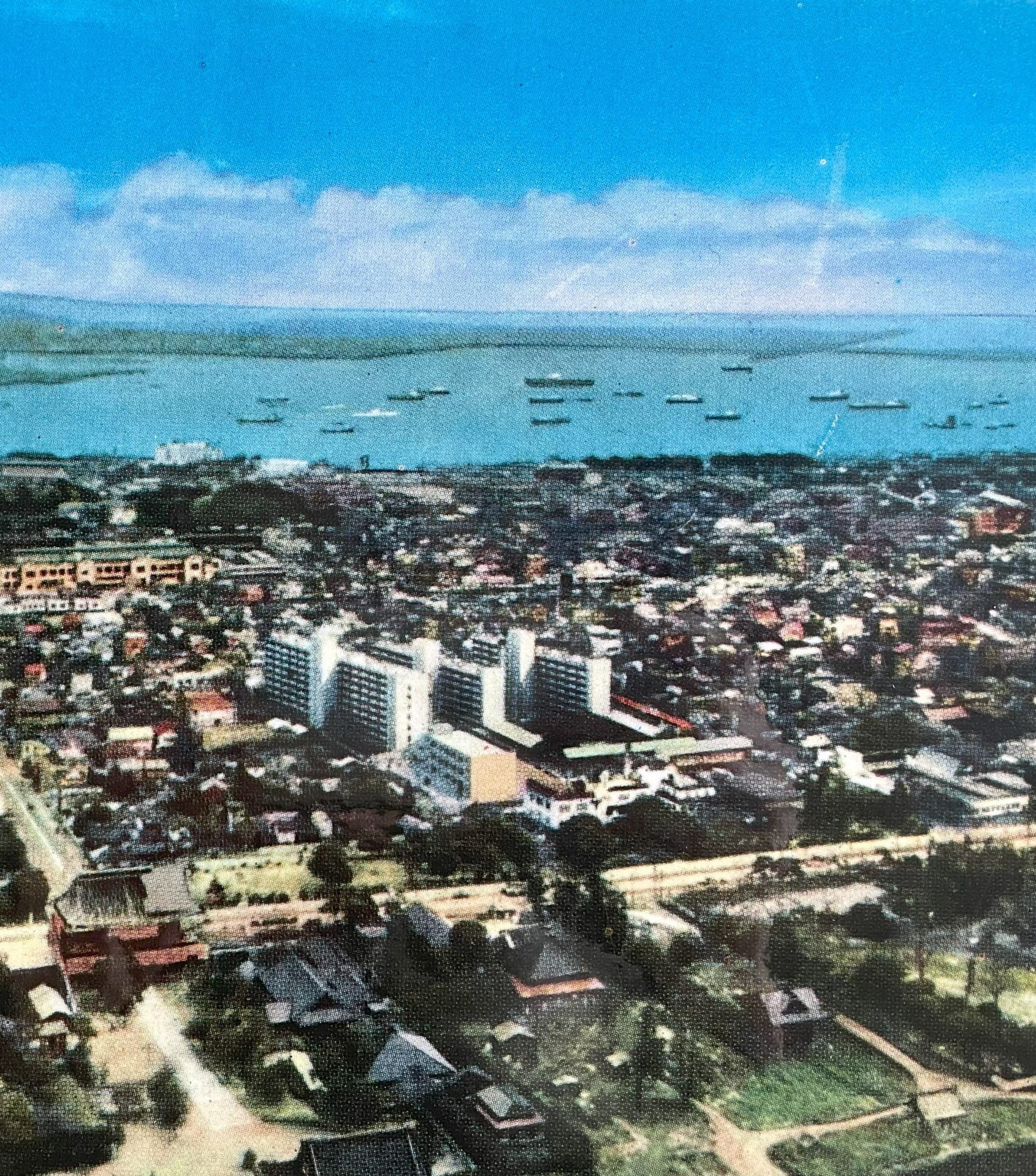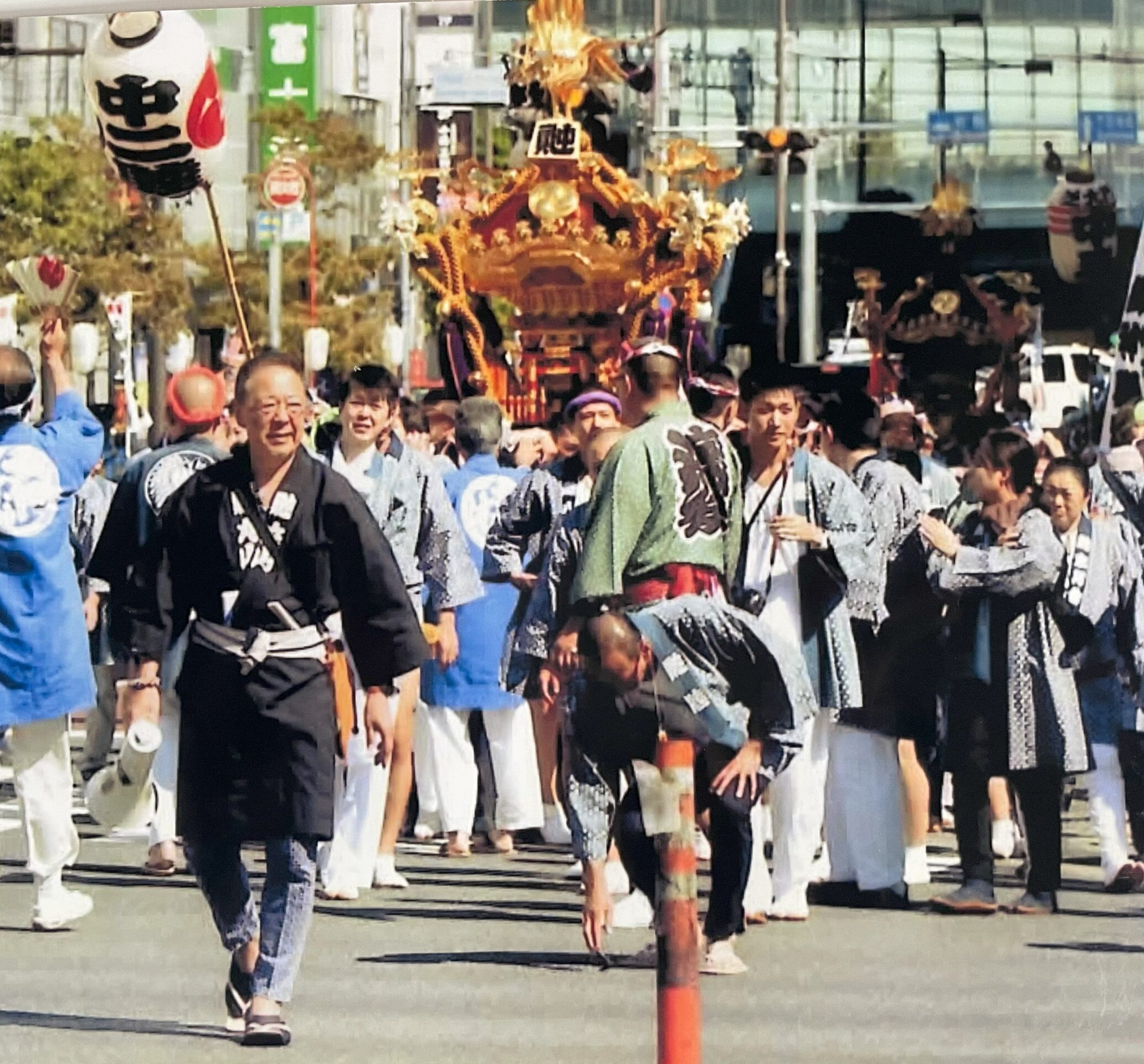
Meet Hiroyuki Maruyama in “Daimon-Hamamatsucho”, the town of festivals and entertainment.
Hiroyuki Maruyama has lived in this town for 77 years, and serves as the president of the Atago-Ni-no-bu District Association, overseeing 15 neighborhood associations. From an era when there was nothing but debris and barracks to the present day when Azabudai Hills stands where his acquaintances live, he has lived enjoying this area thoroughly. Alongside the gradual changes in the town, his ways of enjoyment have also changed gently with flexibility.
Create Town Across Generations!
Born in 1947 when the former Shiba, Azabu, and Akasaka Wards were integrated into Minato Ward, I’ve been here ever since. My parents were shrine carpenters and served as the head of the construction union in the Atago district. Our home then was a gathering place because we kept the health insurance cards for union members. Even now, I live surrounded by familiar faces, from classmates to seniors and juniors I’ve known for a long time.
I used to run a café on the first floor of my home. Eighteen and nineteen-year-olds worked part-time, and people would jokingly say, “Is Maruyama’s café a gathering spot for troublemakers?” (laughs). When I closed the shop at 60, I became the neighborhood association president of Shibadaimon-Naka-Nicho, and I’ve been serving as the president of the Atago-Ni-no-bu District Association since I was 66. Now, I interact with those kids who have grown up and their parents in a different role. It feels like we’ve been building the town together with people from various generations who were born and raised in this area.

Changes in the Town
After the war, there was nothing. The area where the current World Trade Center Building stands was a base for the occupation forces, and children would gather around military police, saying “Give me chocolate.” There were only rubble and barracks as far as the eye could see. Later, a sports center with a skating rink was built nearby, and subsequently, Japan’s first apartment building, Nikkatsu Apartment, was constructed. This area had a rich natural environment and a lively atmosphere with various entertainment spots, where kids of all ages played until sunset. I even commuted to school on roller skates, which was a trend at the time.
The area where TOKYO TOWER now stands was a dense jungle called “Momijidani,” an autumn leaves valley. Koyo Ozaki, the author of “Kon-jiki Yasha” (The Golden Demon), was from our neighborhood association. He adopted his pen name from this place and even used it as the setting for some memorable scenes in the story. I was happy when TOKYO TOWER was built in 1958. By the way, there was news about a baseball found inside the cylindrical support column during the antenna replacement at the top of the tower, which was bent during the Great East Japan Earthquake. I’m sure that ball was mine because I used to play baseball frequently near the construction site (laughs).
As I grew up in the wild culture of the downtown area, the landscape gradually changed. Looking at it now, it’s a significant transformation, but it didn’t happen overnight. And new things are interesting too. My world has expanded by interacting with people who work at World Trade Center Building.

Charms of Daimon-Hamamatsucho!
There are many festivals throughout the year due to the abundance of temples and shrines in the area. In April, the “Gyoki” memorial service at Zozoji Temple is spectacular, and there are ”Karasumori-jinja Rei-tai-sai (grand festival)” in May, and lively “Shiba-daijingu Dara-dara Matsuri” in September, which lasts for 11 days, featuring a procession of about 30 mikoshi (portable shrines) departing from the Daimon intersection. It’s a sight to see. I’ve been strolling around wearing a happi coat all this time. When I lend a happi to foreign visitors who come to see the festival, they happily put it on. “TAKESHIBA Seaside Music & Dining” where you can enjoy music by the seaside, and the spring event “Takeshiba Minato Festa” are organized by corporate folks, and it’s appreciated.
This town is livelier on weekdays. It’s enjoyable to mingle with foreigners and young people at izakaya, Japanese pubs, though you have to be careful not to boast too much—maybe limit it to one in ten stories (laughs). I’d love to meet people who come for MICE events at izakaya. I only know old things, so I’d like to learn something new. It would be interesting to exchange ideas with each other.

information
【Hiroyuki Maruyama】
Atago-Ni-no-bu District Association President.
Born in 1947 in Shiba Ward, Tokyo. After working at a restaurant in Ginza, operated a café at home from the age of 38 to 60. Subsequently, served as the president of the Shibadaimon-Naka-Nicho Neighborhood Association, and a few years later, assumed the role of president of the Atago-Ni-no-bu District Association. Also holds positions such as Vice President of the Atago Crime Prevention Association, Vice President of the Shiba Fire Prevention Association, Chief Representative of Shiba-daijingu, and Chief Representative of Shiba Toshogu.



